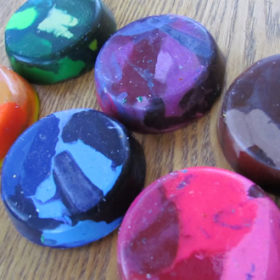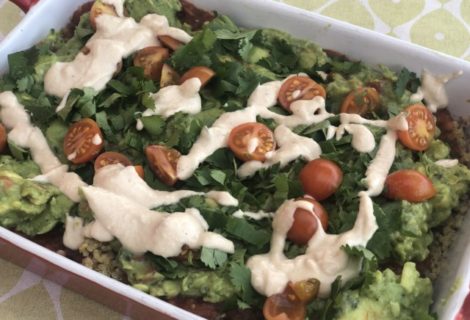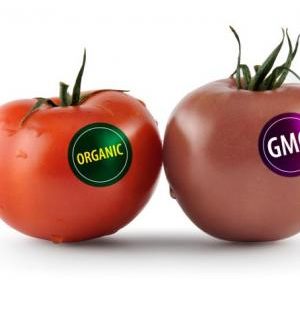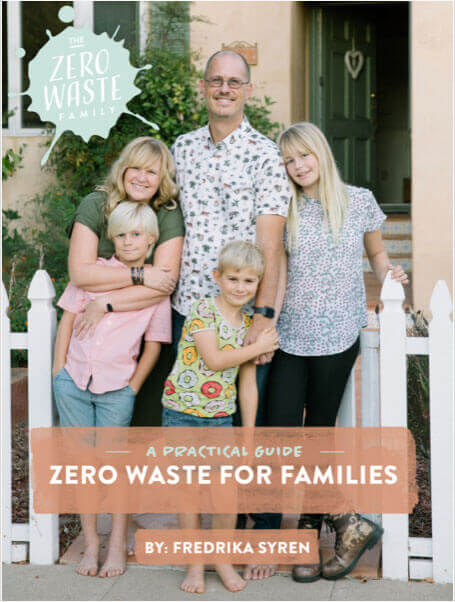By Kim Robson:
Artificial food coloring can be found in nearly all processed foods today. Food dyes are used for a number of reasons:
- to offset loss of natural color due to light, air, temperature extremes, moisture, or storage;
- to make a uniform product by correcting natural variations in color;
- to enhance naturally occurring colors, subsequently “enhancing” its flavor in the mind’s eye;
- to provide color to bland looking, colorless foods;
- to make foods marketed to kids more “fun” looking.
The FDA has been carefully monitoring artificial food dyes for over a hundred years. Some early dyes were not only toxic, but
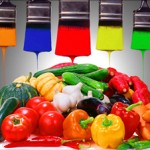
were also sometimes used to mask filth or rot. Due to toxicity, many have been banned over the years.
According to the Center for Science in the Public Interest, all seven FDA approved food dyes allowed for use in the United States contain potentially cancer-causing substances and/or trigger allergic reactions: Blue No. 1, Blue No. 2, Green No. 3, Red No. 40, Red No. 3, Yellow No. 5, and Yellow No. 6.
In March of 2013, the FDA held hearings to investigate whether there is enough evidence linking artificial food dyes to Attention Deficit Hyperactivity Disorder (ADHD) in children to justify placing warnings on labels. Longtime critics were allowed to speak about their concerns before the two-day-long panel, concerns which have persisted since the 1970s.
Unfortunately, the FDA determined there was not enough evidence to warrant any new warning labels. But they did call for a panel of experts to further review the evidence and advise on possible future policy changes. If artificial food dyes affect only a small fraction of the population, there may be few changes, which would undoubtedly be met with harsh resistance from food manufacturers.
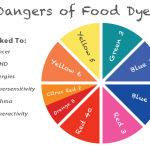 According to a 2004 Southampton University study, adding food colors to children’s diets increased hyperactivity rates in all young children, not just those who were allergic to food colorings or who had ADHD.
According to a 2004 Southampton University study, adding food colors to children’s diets increased hyperactivity rates in all young children, not just those who were allergic to food colorings or who had ADHD.
“I want this to address a fundamental issue which is: Why do we have to have colored food?” said Professor John Warner, the study’s author. “It’s absolutely imperative to have follow up studies because we are not now just talking about a population of children with a particular problem we are saying there’s a potential for this to be an effect on all children. And, if that really is the case, then food coloring should be removed.”
Some good news: a number of natural food dyes are being commercially produced in response to growing demand:
- Caramel coloring (E150) – Made from caramelized sugar
- Annatto (E160b) – Reddish-orange; made from the seed of the achiote
- Chlorophyllin (E140) – Green; made from chlorella algae
- Cochineal (E120) – Red; made from crushed cochineal insects (Dactylopius coccus); also called carmine; NOT vegan or kosher
- Betanin (E162) – Red; extracted from beets
- Turmeric (curcuminoids, E100) – Yellow; not very colorfast
- Saffron (carotenoids, E160a) – Reddish-orange
- Paprika (E160c) – Reddish-orange
- Lycopene (E160d) – Reddish-orange
- Elderberry juice – Purple-blue
- Pandan (Pandanus amaryllifolius) – Green
- Butterfly pea (Clitoria ternatea) – Blue
If you’re the parent of small children, or are particularly sensitive to or concerned about chemicals, then you should avoid synthetic food colorings by diligently checking food labels in grocery stores or by shopping at chains like Whole Foods Market and Trader Joe’s, which refuse to sell foods with artificial coloring.



